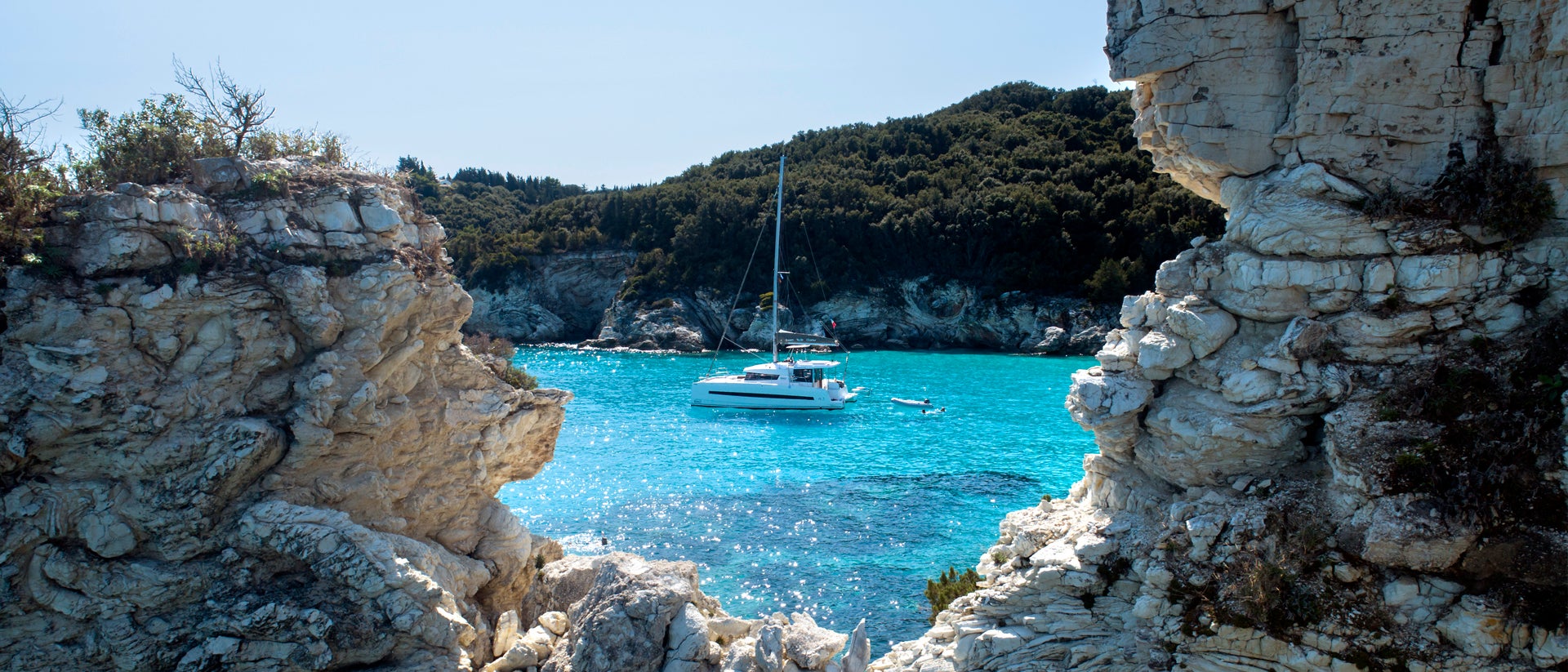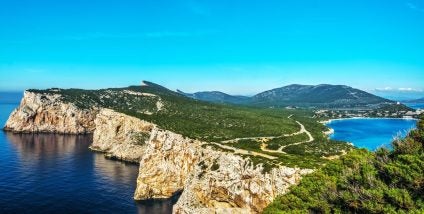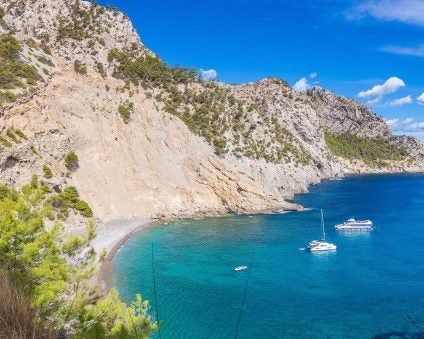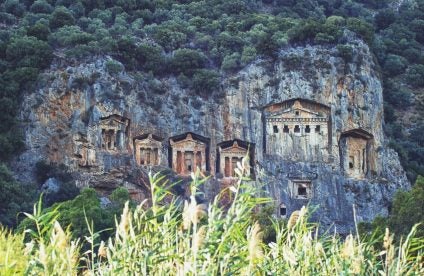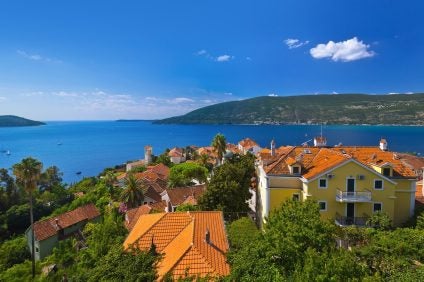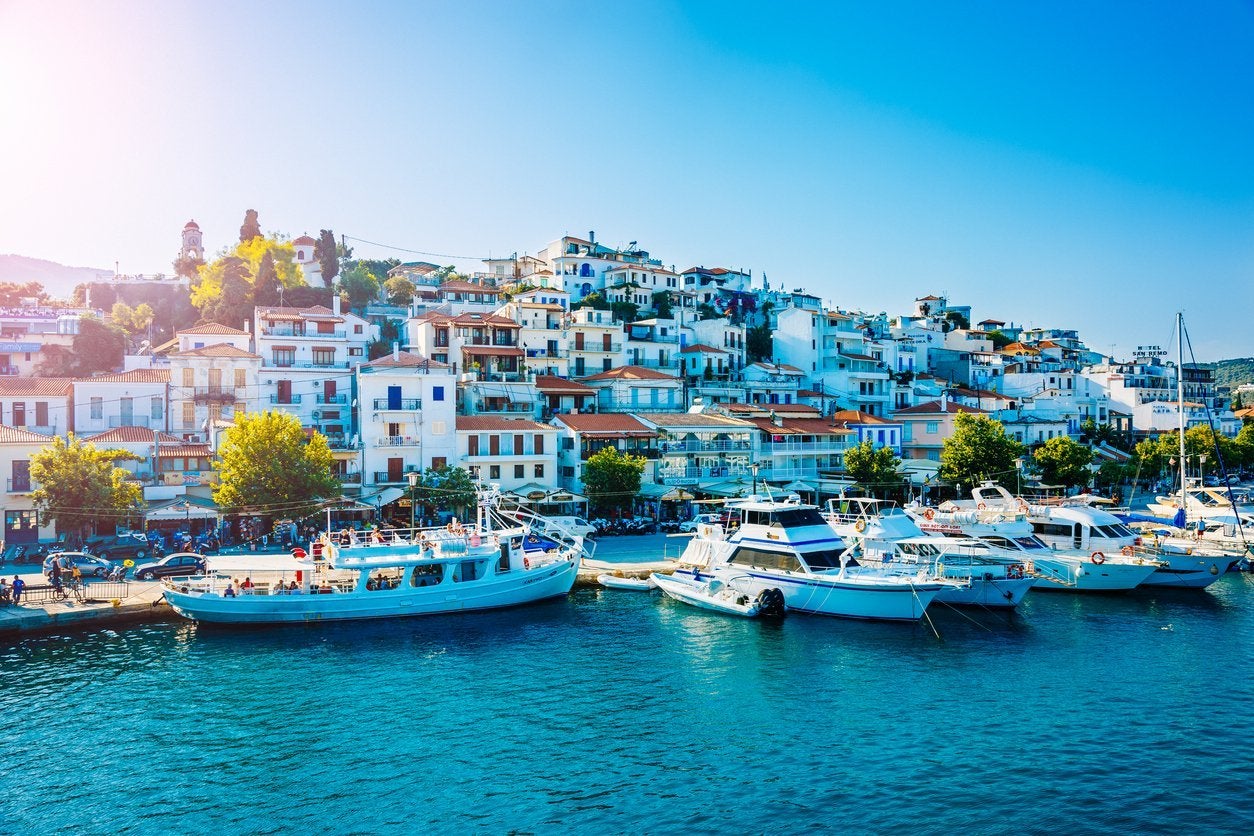
We’re super excited to share with you a three-part blog series about sailing the Greek Islands, its wind patterns and itinerary recommendations from Master mariner, Julian Blatchley. Julian has sailed the Greek Islands since the 1980s, when he chartered a sailboat out of Alimos Marina, Athens, and slightly over-stayed, returning home in 2014.
He worked as a charter and delivery skipper for six years and sailed a number of his own boats in Greece. He has contributed to sailing guides for Greek waters and is the author of two light-hearted books on the pitfalls of sailing in Greece, ‘Adjacent to the Argonauts’ and ‘The Trojan Walrus’. He continues to sail the islands in his 45ft Starrett sloop and has shared his knowledge with us below.
Sailing areas in Greece
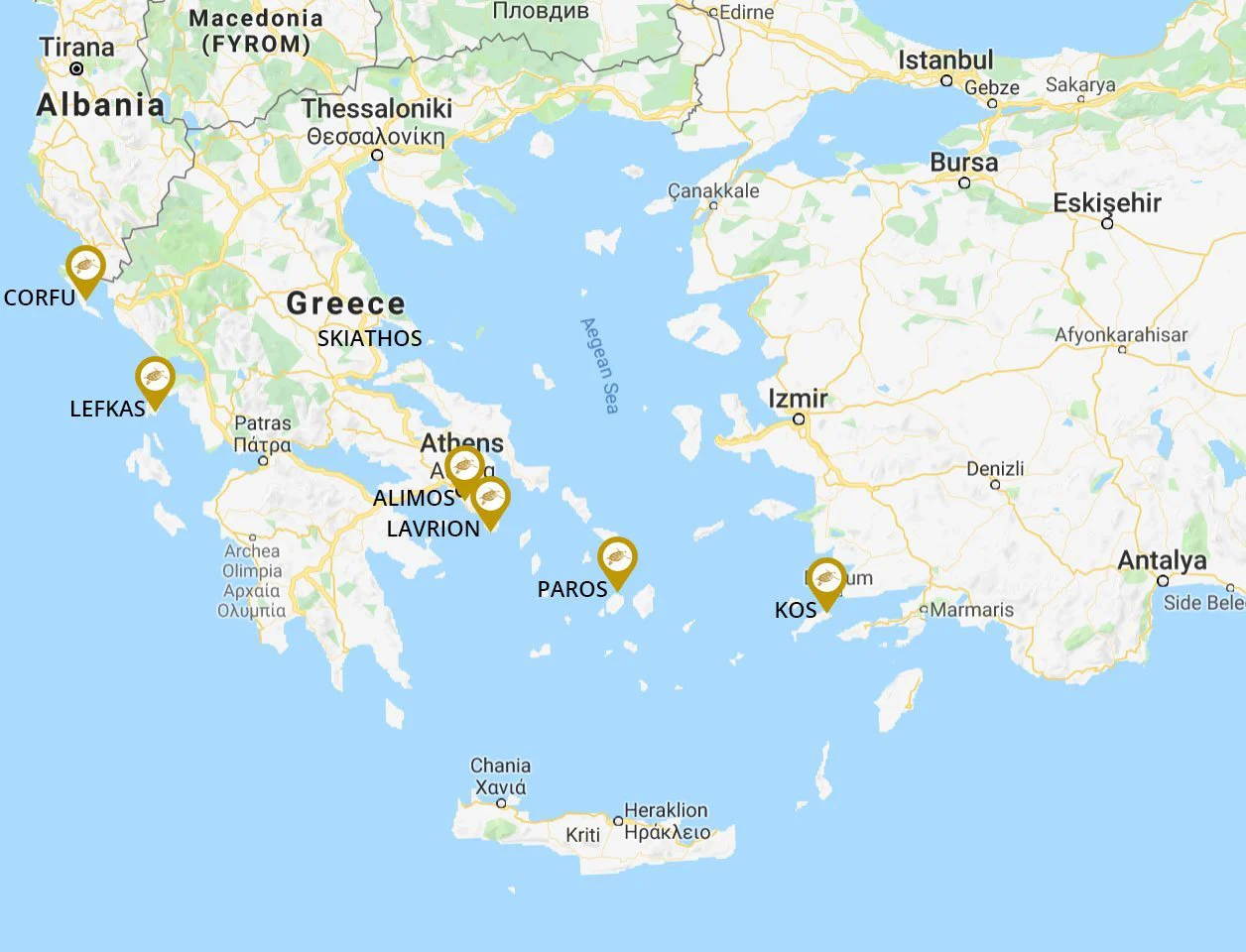
Think of Greece and I expect it brings to mind white churches with boldly colored domes, biblical houses, ruggedly arid islands, classical ruins and ancient soldiers. Your mind wanders to tavernas serving ouzo, Greek salad and moussaka, or sailing a sea of such profound, complex and immaculate blue that no single word can accurately describe it. Yet many of these images are regional and the Greek Islands offer much more with rich experiences for sailors.
I have detailed the four main sailing areas of Greece below, including the southern Aegean, Argosaronic, Ionian and Gulf Of Corinth and northern Aegean and Evia, and I have touched on when to sail, but remember to consider the fall for those areas with long seasons. If you can make a last-minute booking, then look for a good long-range forecast and go for it!
Each island is unique yet all these destinations enjoy hot sand underfoot, the balm of the water, salt drying on your skin, the caress of the wind, scent of herbs, the brilliance of the light and the impressionist haze all of which make up that distinctive sense of Greece, and could not possibly be anywhere else.
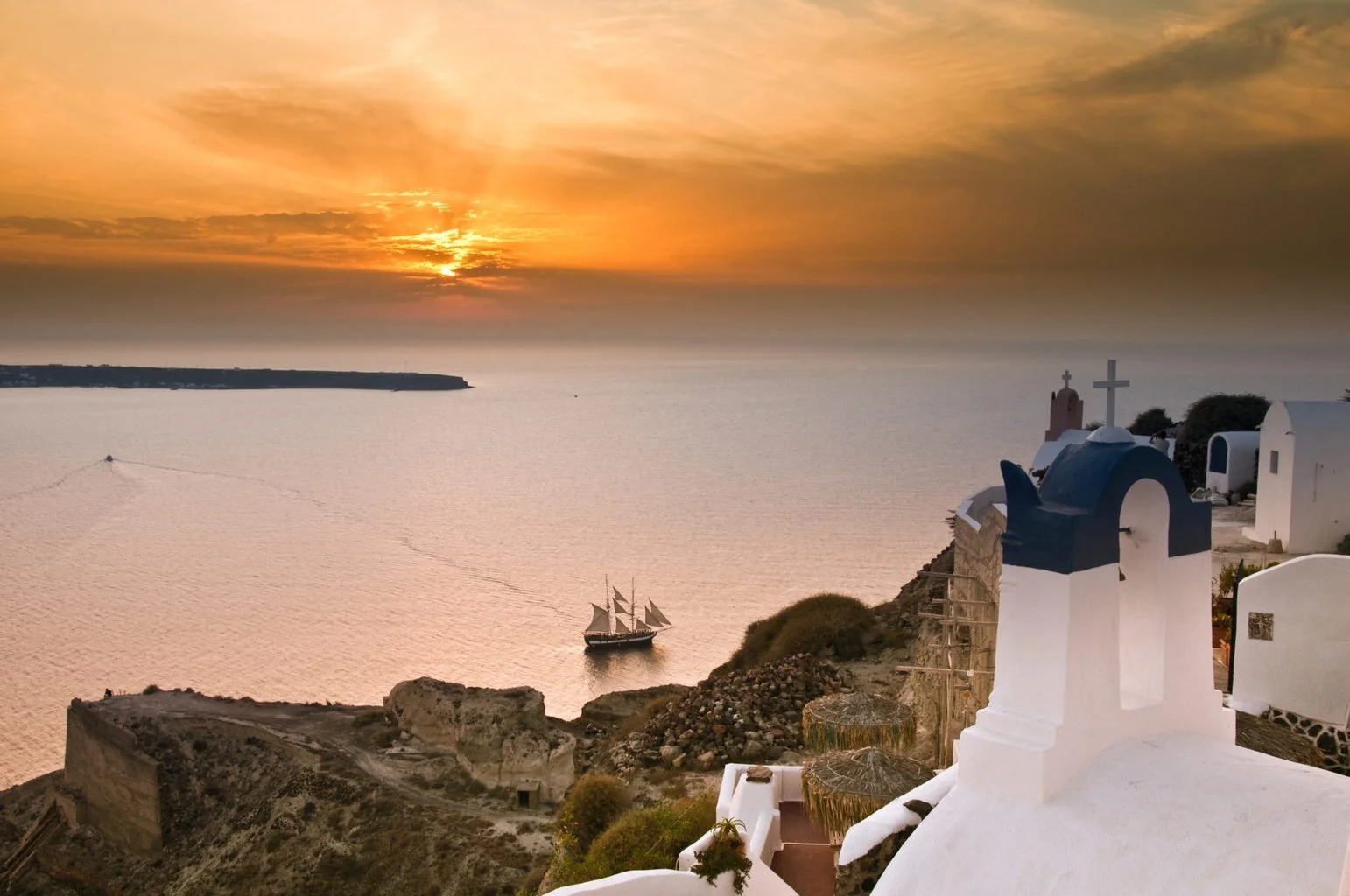
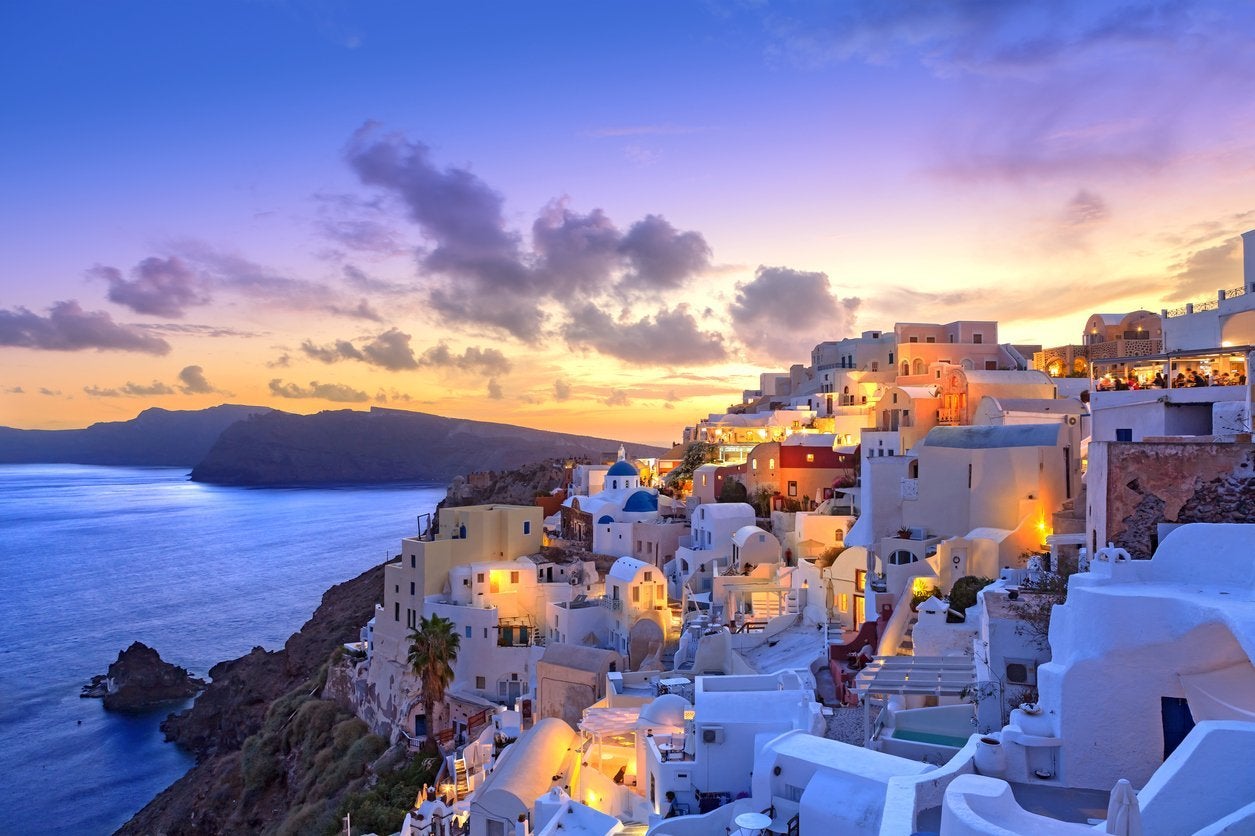
Chartering the Southern Aegean (Cyclades, Dodecanese, Ikaria and Samos)
SAIL FROM DYC BASES IN LAVRION, KOS, OR PAROS
The islands of the south Aegean are the best-known and include the Cyclades (if you want to pronounce this in the Greek fashion, try kick-LAH-thess), Dodecanese and the eastern Sporades islands of Ikaria, Samos and Fourni. Some of the best Greek Islands to visit, you’ll find the traditional images of Greek white houses and churches.
With the exception of Naxos and Samos, the islands feature bleached rock landscapes and a cobalt sea dazzling under the Mediterranean sun. There is a real sense of subsistence and endurance. Few uncultivated trees grow here, and those that do are bent crazily southward by the prevailing winds. Towns and villages cling high up, protected from the wind and long forgotten pirates.
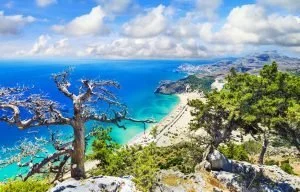
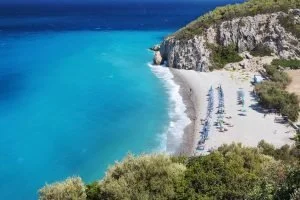
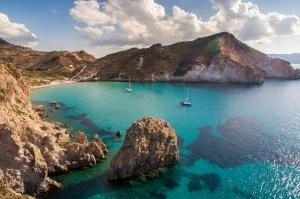
The area is best accessed from DYC bases in Lavrion, Kos or Paros. Try Ios or Paros for the party scene and Delos for antiquities. Serifos, Astypalaia and Amorgos are quintessentially Greek, while Patmos and Folegandros are chic. Naxos and Samos are green and Rhodes and Syros are bustling hubs. Nisyros is a walk-in working volcano and Ikaria is a massage for the soul. A personal favorite when sailing the Greek Islands is Sifnos, an island known for its ceramics and the excellent cuisine cooked using them. Order the local ‘mastelo’ casseroles and the ‘pylino’ dishes. The use of capers is a signature in many meals and the cheeses are pungent and splendid.
Off season, all of these islands, apart from Rodos and, to a lesser extent, Kos, Syros and Milos, are seasonal. Very little is open between the end of October and Easter. Off-season sailing can be very rewarding, but you need to be well stocked and use local amenities.
In April, May and October, there are frontal weather systems, so winds will be variable. There shouldn’t be any problems for those experienced enough to charter and the weather is usually pleasant. During June and September, it’s hot and the winds can be lighter. If you want to sail the South Aegean without the stronger winds of the meltemi season or without the high tourist season, then this is the time to go – I love this time of year.
July and August is high season and the time of the meltemi. It’s no exaggeration to say that sailing the Aegean in the meltemi is one of world sailing’s great experiences – it’s awesome. In these months, only experienced sailors should sail the Cyclades or Dodecanese without local knowledge.
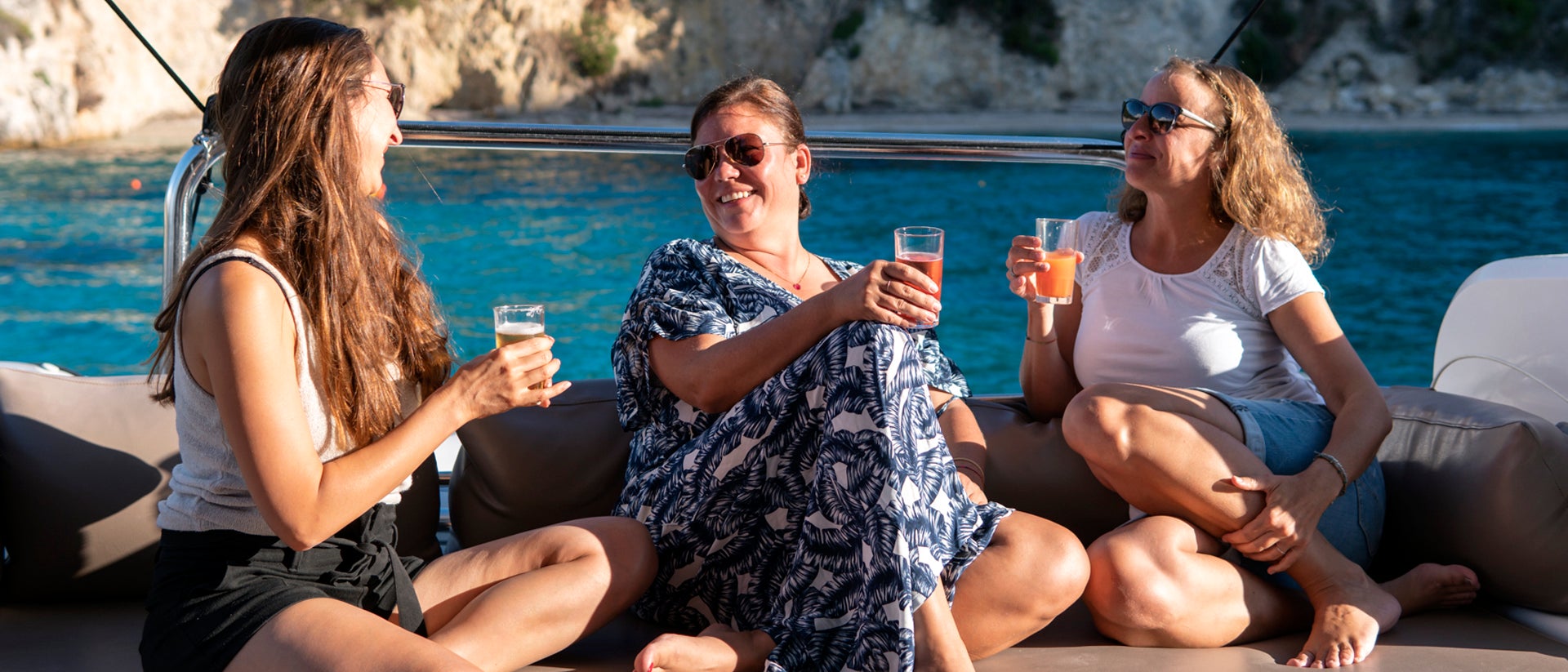
Sailing the Argosaronic (Peloponnese coast)
SAIL FROM DYC BASES IN ATHENS OR LAVRION
Lying southwest of Athens, the Argosaronic area lies off the east coast of the Peloponnese from Cape Sounion, south of Athens, westward to the Corinth Canal and then south to Cape Malea. The islands in the area are closer together and although there are fewer of them, the Peloponnese coast offers fantastic itinerary opportunities when sailing the Greek Islands.
The prevailing weather is almost always lighter than the open sea areas with the wind in the Argosaronic typically two beaufort forces lower than the Aegean. This makes the Argosaronic the primary sailing ‘nursery’ in Greece, easily accessible from Athens and usually preferred by beginners, families, relaxed sailors and anyone finding the Aegean a bit boisterous.
The Argosaronic is less seasonal than others and very different from the bright minimalism of the Aegean islands, with high landscapes and heavily forested lower levels. Enjoy pistachio nuts, wine, lamb, seafood and some of the world’s best olives. The architecture has a Tuscan feel with terracotta roof tiles and some grand, ornate buildings, the scent of pine sap wafts in the summer air and harbors teem with fishing boats, making them among the best Greek Islands to visit.
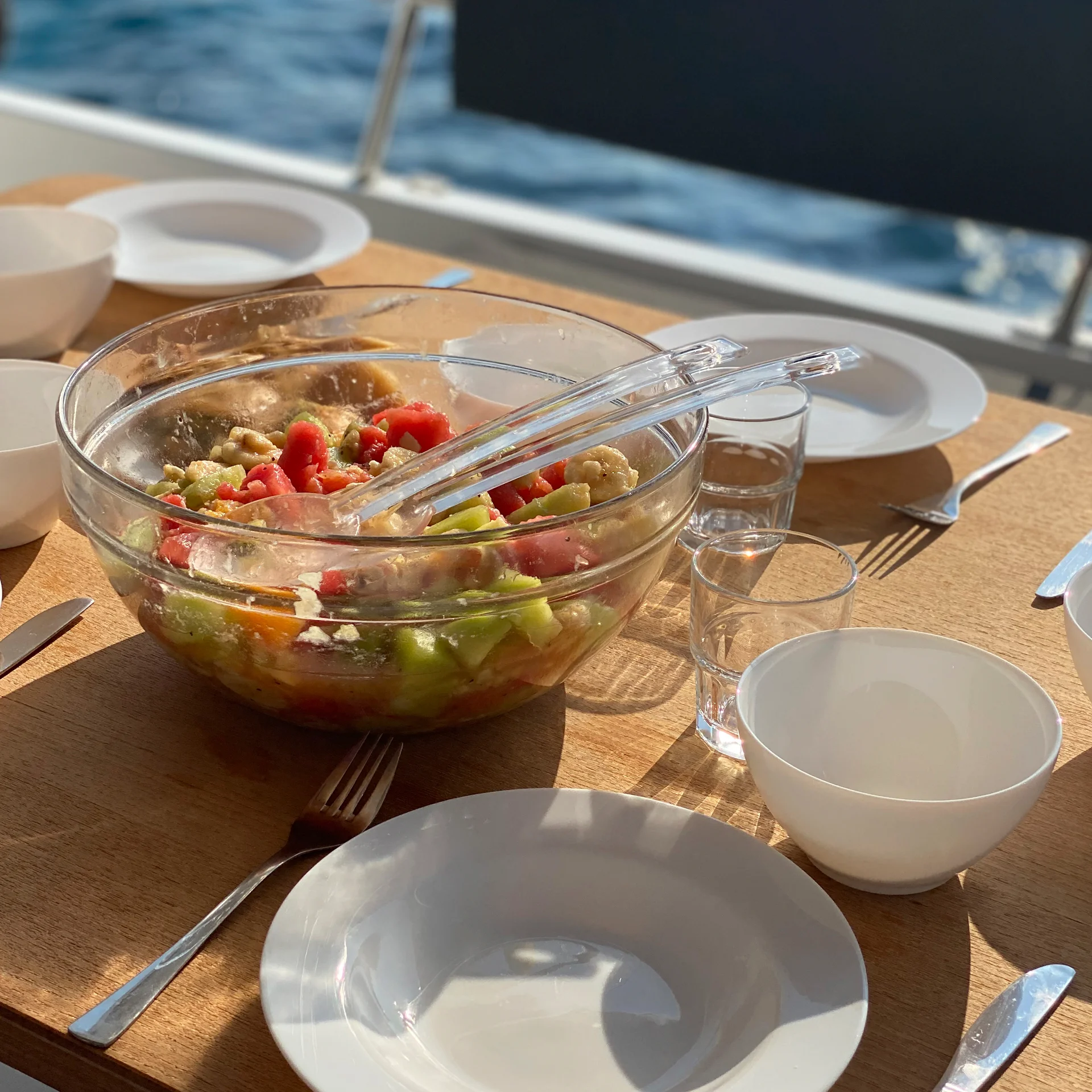
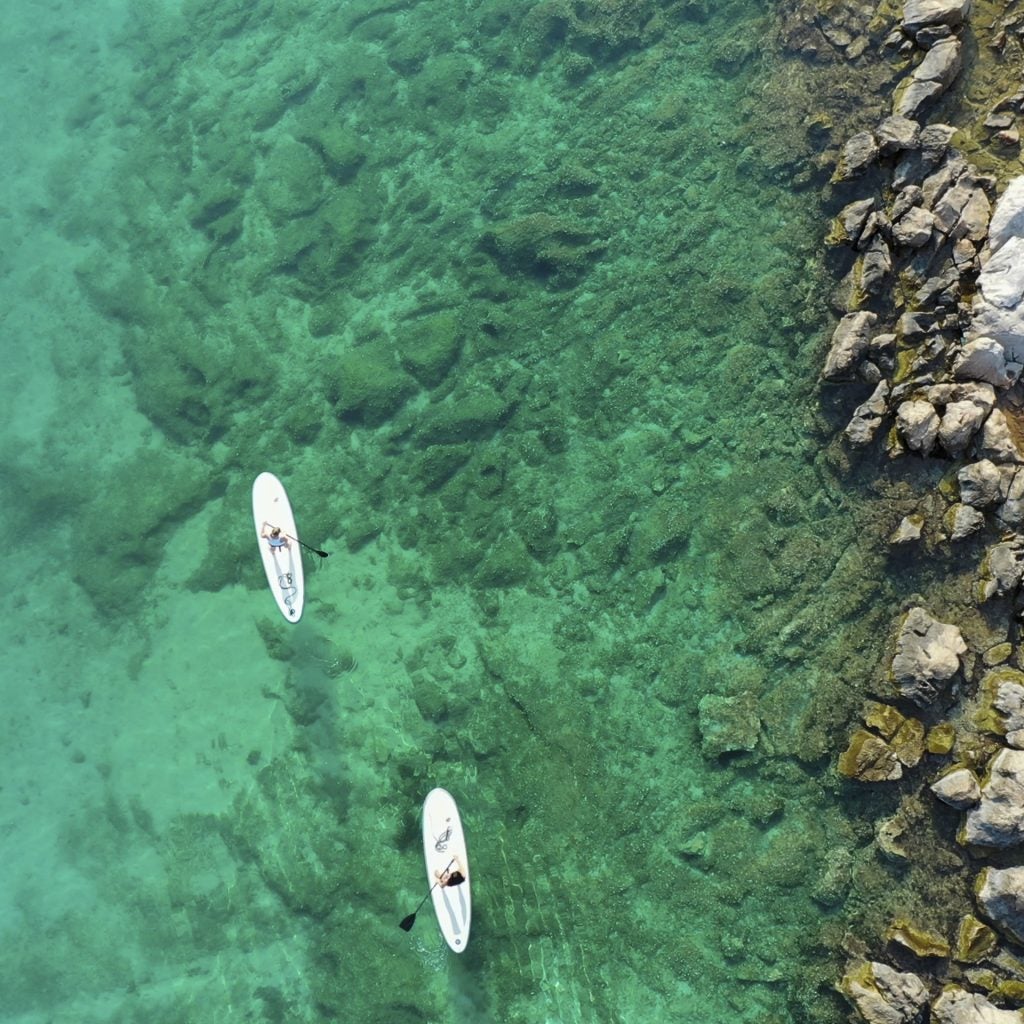
It is best sailed from Alimos Marina near Athens, but also easily accessible from Lavrion. Close proximity to Athens brings many Greeks to the area and in August the northern islands and resorts of the area can get very busy. This has been offset by the move of the airport to the east side of Athens, which has reduced the tourist influx and you should not find the place overcrowded in general.
Access to the ancient sites is very easy with Athens, Corinth, Mycenae, Tirins, Epidavros, Afaia, Mystras and many more all close by. There are also more recent historical sites to explore, such as the Byzantine fortress and village of Monemvasia or the Venetian fortress of Palamidi at Nafplion.
You can sail the Argosaronic all year round and the season lasts longer here than anywhere else in Greece. February and March bring cold north winds, rain and cloud, but also sunny spells and magnificent spring wildflowers. April and May have frontal weather with variable winds and sea temperatures become attractive in mid-May. June can be hot with light winds and the bouka doura thermal winds become reliable in the afternoon. For more information on the bouka doura, read my third blog in this series which focuses on these winds.
In July and August north winds prevail and the meltemi can affect the Argosaronic (although rarely as strong as the Aegean meltemi). September is a lovely month with warm seas, moderate wind, fewer tourists and the morning dews bring back fresh color to the sun-baked land.
In October the frontal weather returns, but the month is almost always worth sailing with its warm seas and frequent good, weather. November and December are a lottery, as there could be cloud and cold, but I have known excellent, sunny conditions and cruised happily almost to Christmas. And then there is the wild card… January. Some years, the ‘halcyon days’ occur with calm, cloudless days with blazing sun and clear, cold air at night.
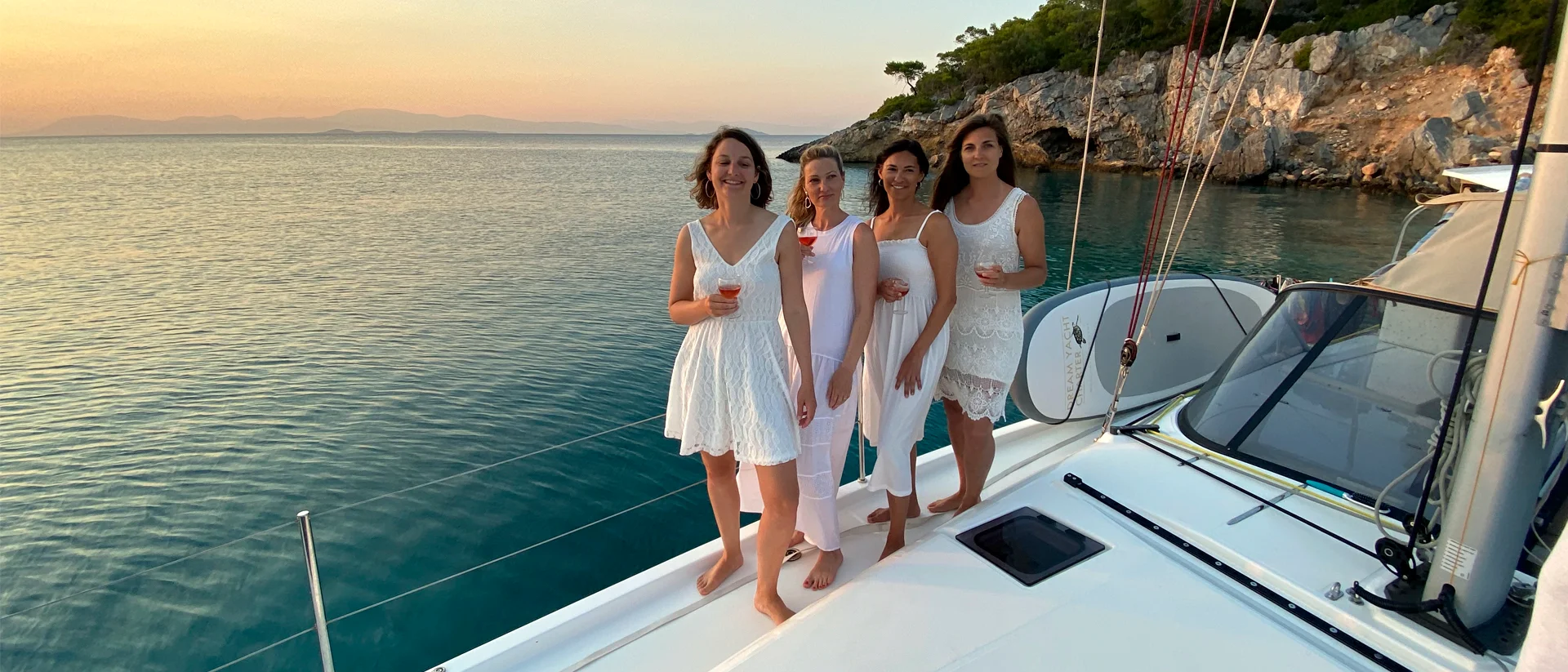
Exploring the Ionian and Gulf Of Corinth
SAIL FROM DYC BASES IN CORFU OR LEFKAS
The Ionian Sea is between Sicily and the western shores of Greece. It’s an enormously popular sailing area with islands and generally has lighter, steadier winds than the Aegean.
The area has a different character with a recent Italian influence and western Greece has historically been an area of fusion, making them a must-see when sailing the Greek Islands. Here, Hellenic antiquities, including Olympia, the home of the Olympic Games, rub shoulders with Roman ruins, the castles of Norman crusaders and the forts of the Ottoman and Venetian empires.
The Ionian has two large charter bases, at Corfu and Lefkas. There are plenty of anchorages among rustic Kefalonia, party-mad Zakynthos (Zante) and the stunning gem of Ithaca in the southern islands – all of which should be at the top of your list of best Greek Islands to visit. The majestic, cliff-lined yacht sanctuary of Lefkas is at the mid-point and the north holds Corfu and the little islands of Paxos (Paxi) and Antipaxos (Antipaxi).
Two inland sailing areas adjoin this area, the gulf of Amfilochia and the gulf of Corinth. Amfilochia, the ancient actium where Octavius defeated Mark Antony, is at the port of Prevesa and home to extensive wildlife, wetland conservation area and a noble cheese. Corinth, which opens beyond the stunning Rhio Bridge, leads east past ancient Lepanto, Corinth and Delphi until it connects with the Argosaronic at the Corinth Canal. There is a possible third inland area, since the historic town of Missolonghi also boasts a lagoon, where you can go gunk-holing.
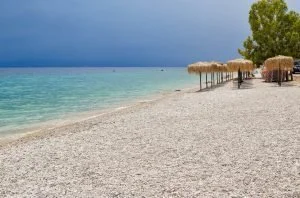
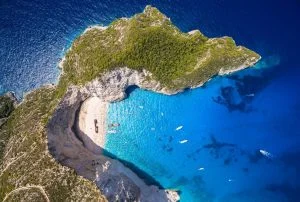
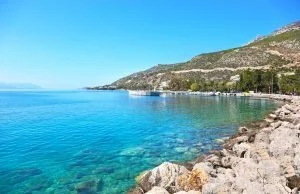
When to sail the Ionian? The west coast season is shorter and the weather is great for sailing between mid-May and mid-October, although there may be the odd thunderstorm at the beginning and end of season. The easy sailing conditions mean the area is quite busy in the high season of July and August, so June and September are more favorable. The principal summer wind is the maistros, a daily NW or WNW wind that begins to blow around 11am to noon and continues to evening, reaching three and five Beaufort. Nights are mostly calm, apart from some katabatic gusts close to high ground.
In winter, the months of November to April are much wetter than the Aegean and the Ionian is more affected by frontal weather systems. The weather forecasting is excellent, so if you are adventurous and don’t mind hunkering down whilst the odd blow goes past you can still sail.
Discovering the northern Aegean and Evia
SAIL FROM THE DYC BASE IN LAVRION
The fourth major sailing area is the northern Aegean and it’s a haven for those wanting to avoid crowds. Although it’s as beautiful as other areas in Greece, charter sailing has not developed in this area to the same extent as the south Aegean. This is simply due to other islands being close to the charter hub of Athens and many cruising sailors take refuge in the north when other areas become busy.
In general, the northern Aegean summer is shorter, and the winds are lighter, than in the south Aegean. During the meltemi, the eastern islands of Lesvos, Limnos and Chios experience the full strength but in the northern Sporades, Thassos and Samothraki, the winds are less. At other times, winds tend to be light.
Yacht charter bases at Skiathos, Volos and Thessaloniki provide good access to the northern Aegean area, but it is also accessible from Lavrion and even Alimos. In strong north winds, there is a sheltered route northward behind the island of Evia which delivers boats to the northern Sporades without beating through the feisty Cavo Doro.
Northern Greece is known to be hospitable, even by Greek standards and the nightlife and food scene around Thessaloniki are highly rated by Greeks from other areas. The northern Sporades are popular, and they vary in nature from the touristy Skiathos to the peaceful Skiros and the wildlife reserve of Allonissos. The forested mountains of Evia and Pelion contrast with the arable fields of Kalikrateia and the naked rock of Olympus. The beaches of the Chalkidiki peninsulas are immaculate and heavily under-exploited. Tiled, pastel-hued Lesvos is a holiday in itself while forested Samothraki and Thassos are welcoming to sailors. Skiathos hums with summer life, while the goats of Skiros roam rural tranquility – they really are amongst the best Greek Islands to explore on a yacht charter.
The summer season lasts from mid-May, when the last of the frontal systems can be expected, until late September or early October. Meltemi winds can be expected in July/August, and these will be strong in the east but more moderate in the northern Sporades and along the coasts. Winter sailing in the northern Aegean is subject to frontal depressions and is little different from higher latitude sailing. Northern Greece has an alpine winter and is better suited to skiers than sailors!
Each island is unique yet all these destinations enjoy hot sand underfoot, the balm of the water, salt drying on your skin, the caress of the wind, scent of herbs, the brilliance of the light and the impressionist haze all of which make up that distinctive sense of Greece, and could not possibly be anywhere else.
Julian Blatchley
Author of ‘Adjacent to the Argonauts’ and ‘The Trojan Walrus’
Find out more about sailing the Greek Islands
Check out Julian’s next blogs: Mastering the meltemi for exhilarating Aegean sailing in Greece and sail the Aegean by the downwind route.
If you’d like to embark on your very own Greek charter vacation, then take a look at our bareboat charters or skippered charters, or get in touch with our team. You can email us at [email protected] or give us a call at 855.650.8902.
Alternatively, for the more vacation inspiration, head on over to our blog.
